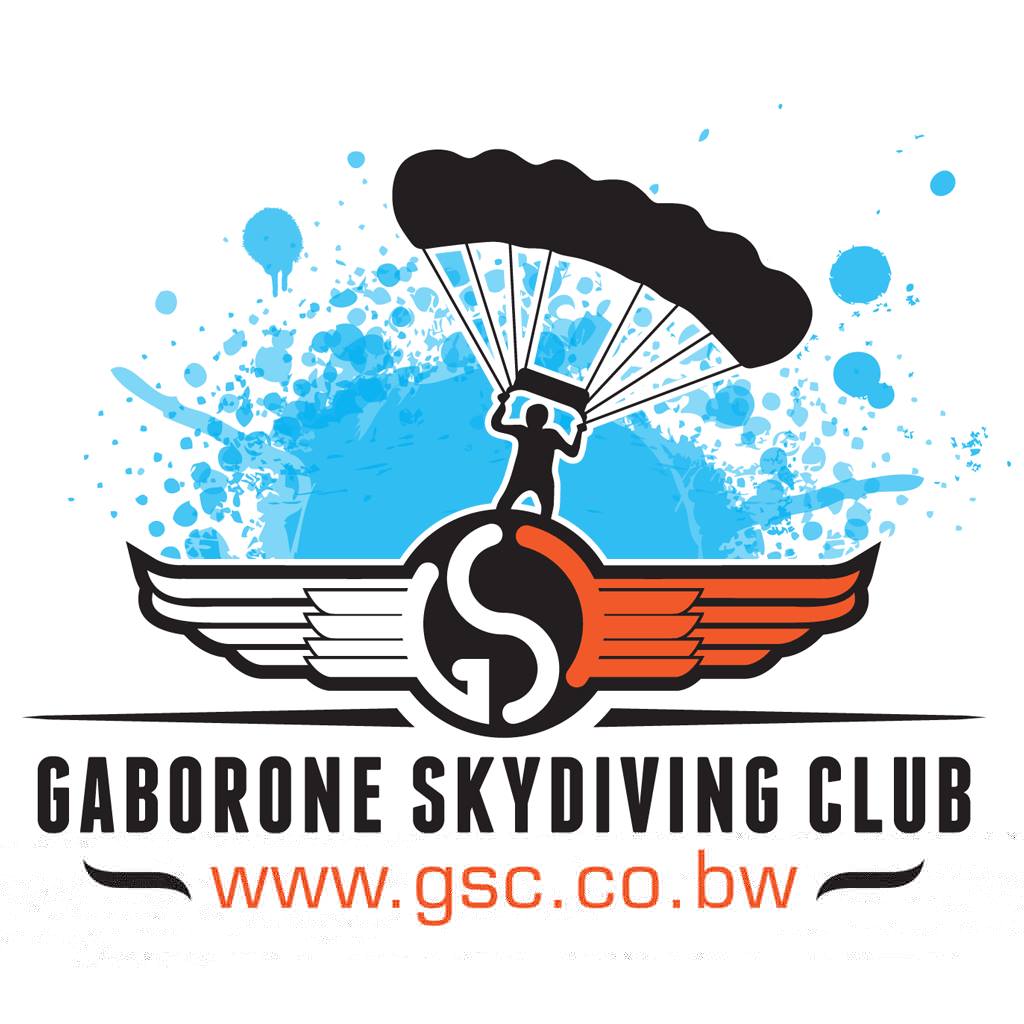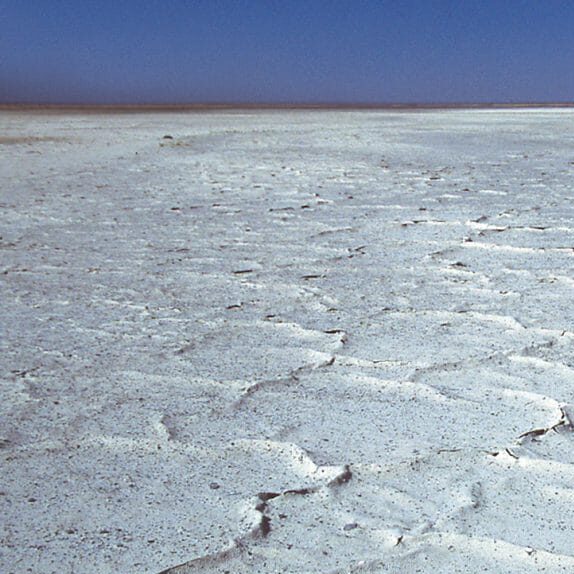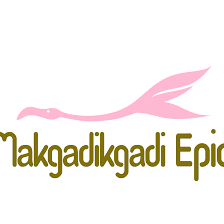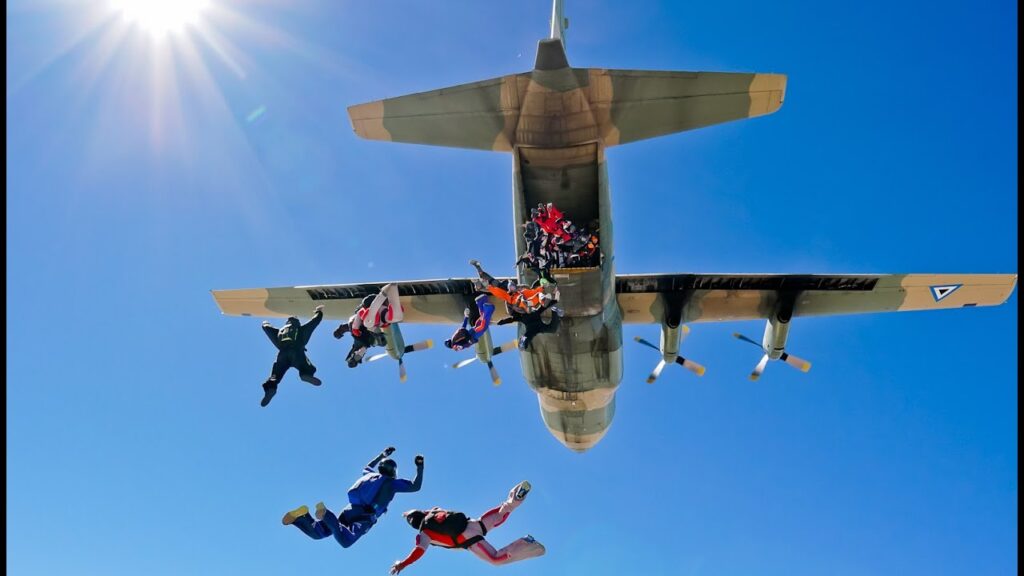
- Founded: 1990
- Founder:
- Chairperson:
- Organized By: Botswana Tourism Organization
- Location: Sir Seretse Khama International Airport
The Gaborone Skydiving Club (GSC) is Botswana’s premier skydiving organization, located in the capital city of Gaborone. Established to promote the sport of skydiving in Botswana, the club provides training, events, and opportunities for both novice and experienced skydivers. The Gaborone Skydiving Club is known for its commitment to safety, excellence, and fostering a vibrant community of skydiving enthusiasts.
History
Founding
The Gaborone Skydiving Club was founded in the early 1990s by a group of passionate skydivers who saw the potential for skydiving to grow in Botswana. The founders aimed to create a structured environment where individuals could learn and practice skydiving safely and enjoyably.
Development
Over the years, the club has expanded its membership and facilities, becoming a central hub for skydiving activities in Botswana. With a focus on safety and training, the GSC has developed comprehensive programs to cater to skydivers of all levels, from beginners to advanced jumpers.
Facilities
Drop Zone
The Gaborone Skydiving Club operates from a well-equipped drop zone near Gaborone. The drop zone features a large landing area, packing and preparation facilities, and comfortable amenities for members and visitors. The location is chosen for its favorable weather conditions and airspace, providing ideal conditions for skydiving.
Aircraft
The club uses a variety of aircraft suitable for different types of jumps. These include small planes for tandem and solo jumps as well as larger aircraft for group jumps and formation skydiving. The fleet is maintained to high safety standards to ensure reliable and secure skydiving operations.
Activities and Programs
Training Programs
The GSC offers a range of training programs designed to introduce new participants to the sport and help experienced skydivers advance their skills. These programs include:
- First Jump Course: A comprehensive introductory course covering the basics of skydiving, safety procedures, and tandem jumps.
- Accelerated Freefall (AFF): An advanced training program that allows students to progress quickly from tandem jumps to solo skydiving.
- Static Line Course: A traditional training method where beginners jump with a static line that automatically deploys their parachute.
Tandem Jumps
Tandem jumps are a popular option for those new to skydiving or looking for a one-time thrill. Participants jump while securely attached to an experienced instructor, allowing them to experience freefall and parachuting with minimal training.
Solo and Formation Skydiving
For experienced skydivers, the club offers solo jumps and opportunities for formation skydiving. These activities are designed to challenge participants and allow them to refine their skills in a supportive environment.
Major Annual Events
1. Botswana National Skydiving Championships
The Botswana National Skydiving Championships is one of the premier events hosted by the Gaborone Skydiving Club. This competition attracts skydivers from across Botswana and neighboring countries, featuring various categories such as:
- Accuracy Landing: Competitors aim to land as close as possible to a target.
- Formation Skydiving: Teams of skydivers perform coordinated maneuvers and formations during freefall.
- Freefly: Participants showcase their skills in vertical freefall orientations.
2. Gaborone Skydiving Festival
The Gaborone Skydiving Festival is a multi-day event that combines skydiving activities with social and cultural events. Highlights include:
- Tandem Jump Specials: Discounted tandem jumps for beginners, providing an accessible entry point into the sport.
- Demo Jumps: Experienced skydivers perform demonstration jumps, showcasing advanced techniques and formations.
- Night Jumps: Skydiving after sunset with illuminated equipment, offering a unique and thrilling experience.
- Live Music and Entertainment: Local bands and DJs provide entertainment, creating a festive atmosphere for participants and spectators.
3. Makgadikgadi Epic
While primarily associated with the Makgadikgadi Salt Pans, the GSC plays a significant role in organizing and facilitating the Makgadikgadi Epic. This event is a highlight of the Botswana skydiving calendar, featuring:
- Mass Jumps: Large group jumps over the expansive salt flats, providing breathtaking views and a unique skydiving experience.
- Adventure Activities: Complementary activities such as quad biking, hot air ballooning, and cultural performances.
- Eco-Friendly Initiatives: Efforts to minimize environmental impact and promote conservation in the Makgadikgadi region.
Regular Events and Activities
1. Monthly Club Competitions
The GSC hosts monthly competitions for club members, fostering a friendly and competitive environment. These events often include:
- Speed Star Competitions: Teams compete to complete formations in the shortest time.
- Canopy Piloting: Skydivers perform precision maneuvers under their parachutes, testing their control and accuracy.
2. Social Jumps and Gatherings
The GSC frequently arranges social jumps and gatherings, providing opportunities for members to bond and share their passion for skydiving. These events often include:
- Group Jumps: Organized jumps for groups of friends or club members.
- Barbecues and Picnics: Social events held at the drop zone, fostering a sense of community and camaraderie.
Special Events
1. Charity Jumps
The Gaborone Skydiving Club organizes charity jumps to raise funds for local causes and organizations. These events often involve:
- Sponsored Jumps: Participants raise money by seeking sponsorship for their jumps.
- Awareness Campaigns: Skydiving events tied to raising awareness about important social or environmental issues.
2. Corporate and Team-Building Events
GSC offers tailored skydiving experiences for corporate groups and organizations looking for unique team-building activities. These events can include:
- Tandem Jumps: Providing an adrenaline-pumping experience for employees or clients.
- Team Challenges: Group activities designed to promote teamwork and collaboration.
3. Holiday and Themed Jumps
To celebrate various holidays and special occasions, the GSC hosts themed jumps. Examples include:
- Halloween Jumps: Participants skydiving in costumes.
- New Year’s Eve Jumps: Skydiving to ring in the new year with a thrilling freefall.
Community and Culture
Membership
The GSC has a diverse membership base, ranging from casual jumpers to dedicated skydiving professionals. Members enjoy access to club facilities, training programs, and special events, fostering a strong sense of community.
Outreach and Education
The club actively promotes skydiving in Botswana through outreach and educational programs. These initiatives aim to raise awareness about the sport, its safety, and its benefits. The GSC also works with schools, youth groups, and other organizations to introduce skydiving to new audiences.
Safety and Regulations
Safety is a top priority for the Gaborone Skydiving Club. The club adheres to strict safety protocols and regulations to ensure the well-being of all participants. Instructors are highly trained and certified, and equipment is regularly inspected and maintained. The GSC also collaborates with national and international skydiving organizations to stay updated on best practices and advancements in the sport.
]]>
- Coordinates: 20.7914° S, 25.4734° E
- Location: Boteti Region
- Chairman: Botswana Democratic Party [1 Apr 2017 – 4 Apr 2018]
- Education: University of Botswana (BA) (MBA)
- Member of Parliament: Moshupa/Manyana [2009 – 1 Apr 2018]
- Spouse: Neo Masisi (m. 2002)
The Makgadikgadi Salt Pans are one of the largest salt flats in the world, located in the northeastern part of Botswana. These vast, desolate salt pans are remnants of the ancient Lake Makgadikgadi, which once covered a significant portion of the Kalahari Desert. The pans span approximately 12,000 square kilometers and are a unique geological and ecological feature in Southern Africa. Makgadikgadi is technically not a single pan, but many pans with sandy desert in between, the largest being the Sua (Sowa), Ntwetwe and Nxai Pans.
Geology and Formation
Ancient Lake Makgadikgadi
The Makgadikgadi Salt Pans are the vestiges of a prehistoric super lake, Lake Makgadikgadi, which existed during the Pleistocene epoch. This lake was fed by rivers from the surrounding highlands and was much larger than present-day Lake Victoria. Over time, climatic changes led to the gradual evaporation of the lake, leaving behind a series of salt flats, seasonal lakes, and fossilized shorelines.
Salt Pan Structure
The pans are primarily composed of sodium carbonate and other salts, creating a hard, crusty surface. During the dry season, the pans are arid and starkly white, reflecting the intense sunlight. In contrast, the rainy season transforms parts of the pans into shallow, temporary lakes that attract a variety of wildlife.
Climate
The climate in the Makgadikgadi region is typically arid to semi-arid, with hot summers and mild winters. Rainfall is highly seasonal, occurring mainly between November and March. The dry season, from April to October, sees little to no rainfall, causing the pans to dry up and form a salty crust.
Flora and Fauna
Vegetation
The harsh conditions of the salt pans limit the types of vegetation that can survive. However, some hardy species, such as salt-tolerant grasses and shrubs, are found in the fringes and interdune areas. These plants play a crucial role in stabilizing the soil and providing habitat for various animal species.
Wildlife
Despite the seemingly inhospitable environment, the Makgadikgadi Salt Pans support a diverse array of wildlife, especially during the wet season:
- Birds: The seasonal floods attract large flocks of migratory birds, including flamingos, pelicans, and other waterfowl. The pans are particularly famous for hosting one of the largest breeding populations of greater flamingos in the world.
- Mammals: Species such as springboks, zebras, and wildebeest migrate to the pans during the wet season to graze on the fresh grasses. Predators like lions, cheetahs, and hyenas follow these herbivores, taking advantage of the abundant prey.
- Other Species: Small mammals, reptiles, and insects also inhabit the area, adapted to the extreme conditions of the salt pans.
Human History and Culture
Early Inhabitants
Archaeological evidence indicates that the Makgadikgadi region was inhabited by early humans for thousands of years. Stone tools and artifacts found in the area suggest that prehistoric peoples utilized the resources of the ancient lake and its surrounding wetlands.
Modern Use
Today, the Makgadikgadi Salt Pans are sparsely populated, with few permanent human settlements. The local communities, primarily of the Bakalanga and Basarwa (San) ethnic groups, engage in subsistence farming, cattle rearing, and traditional hunting and gathering practices.
Tourism
The unique landscape and rich biodiversity of the Makgadikgadi Salt Pans attract tourists from around the world. Popular activities include:
- Safaris: Guided tours offer opportunities to see the diverse wildlife, especially during the migration season.
- Quad Biking: The flat, expansive terrain is ideal for quad biking adventures.
- Cultural Experiences: Visitors can engage with local communities to learn about their traditions and way of life.
- Star Gazing: The remote location and lack of light pollution make the pans an excellent spot for observing the night sky.
Conservation
Efforts to conserve the Makgadikgadi Salt Pans focus on preserving its unique ecosystem and protecting its wildlife. Initiatives include habitat restoration, anti-poaching measures, and promoting sustainable tourism. The area is also part of the larger Makgadikgadi Pans National Park, which provides legal protection to the region’s natural resources.
Events Around the Makgadikgadi Salt Pans
The Makgadikgadi Salt Pans and the surrounding areas host several unique and vibrant events throughout the year. These events attract tourists and locals alike, offering opportunities to experience the culture, wildlife, and natural beauty of the region.
1. Makgadikgadi Epic
The Makgadikgadi Epic is an annual skydiving and adventure festival held in July or August at the Makgadikgadi Salt Pans. Organized by the Botswana Tourism Organisation, this event brings together skydivers from around the world to participate in thrilling jumps over the salt flats. The festival also includes other adventure activities such as quad biking, paragliding, and scenic flights, making it a hub for adrenaline seekers.
2. Makgadikgadi Zebra Migration
While not a traditional event, the annual zebra migration is a natural spectacle that draws many visitors. This migration occurs between November and April, coinciding with the rainy season when the zebras move from the Boteti River region to the nutrient-rich grasslands of the Makgadikgadi Pans. This migration is one of the longest in Africa and provides excellent opportunities for wildlife viewing and photography.
3. Bird Watching Season
From November to April, the Makgadikgadi Salt Pans transform into a haven for birdwatchers. This period marks the arrival of migratory birds, including large flocks of flamingos, pelicans, and other waterfowl. Special bird watching tours and events are organized, particularly around Nata Bird Sanctuary and other key sites, allowing enthusiasts to observe and photograph the diverse avian population.
4. Mmakgodumo Cultural Festival
Held in the village of Mmatshumo, the Mmakgodumo Cultural Festival is an annual event that celebrates the rich cultural heritage of the local Basarwa (San) and Bakalanga people. The festival features traditional music, dance, storytelling, and craft exhibitions. It provides an immersive cultural experience for visitors and fosters a deeper understanding of the region’s indigenous cultures.
5. Khumaga Cultural Festival
The Khumaga Cultural Festival takes place in the village of Xhumaga, typically in August or September. This festival showcases the traditions and customs of the local communities through performances, traditional games, and food fairs. It also includes educational workshops on the history and practices of the local ethnic groups.
Towns & Villages Close By
1. Nata
Located to the northeast of the Makgadikgadi Salt Pans, Nata is a small town that serves as a major gateway for tourists heading to the pans. Nata is known for its bird sanctuary, which attracts many birdwatchers, especially during the wet season when flamingos and pelicans are abundant.
2. Gweta
Situated on the northern edge of the Makgadikgadi Pans, Gweta is a popular stopover for travelers. It is known for its large baobab trees and serves as a base for excursions into the pans. The village offers various lodges and camping sites for tourists.
3. Sowa Town
Also known as Sua Pan, Sowa Town is located near the northeastern edge of the pans. It was established primarily for the soda ash mining industry, given the abundant mineral resources in the area. The town provides facilities and infrastructure supporting both the mining operations and tourism.
4. Rakops
Rakops lies to the west of the Makgadikgadi Salt Pans, along the Boteti River. It serves as a logistical point for tourists heading towards the pans or the nearby Central Kalahari Game Reserve. The village offers basic amenities and lodging options for travelers.
5. Mmatshumo
Located to the southwest of the salt pans, Mmatshumo is a small village that provides cultural experiences for visitors. It is one of the traditional settlements of the Basarwa (San) people, offering insight into their way of life and heritage.
6. Xhumaga
Xhumaga (also spelled Khumaga) is a village situated on the western side of the pans, along the Boteti River. It is close to the Makgadikgadi Pans National Park and is known for its scenic river views and wildlife sightings, especially elephants and zebras.
7. Mosu
Mosu is a village on the southern edge of the Makgadikgadi Pans. It is less frequented by tourists but offers a quieter, more remote experience of the pans. The village is a good spot for those interested in exploring the southern reaches of the salt flats.
8. Zoroga
Zoroga is a village located to the northwest of the pans. It is relatively small and remote, providing a more off-the-beaten-path experience for travelers seeking to explore the pans and the surrounding wilderness.
References
- “Makgadikgadi Pans National Park.” Botswana Tourism Organisation.
- Burrough, S. L., & Thomas, D. S. G. (2013). “The African Ecoregion: Ecological Complexity in a Continent of Change.” Nature Geoscience.
- “BirdLife Data Zone: Important Bird and Biodiversity Areas (IBAs) in Botswana.” BirdLife International.

- Founded: 2014
- Founder: Gaborone Skydiving Club
- Frequency: Annually
- Organized By: Botswana Tourism Organization
- Location: Makgadikgadi Salt Pans
The Makgadikgadi Epic is an annual skydiving event held in the Makgadikgadi Salt Pans of Botswana. It is one of the most unique and exhilarating skydiving events in the world, attracting enthusiasts and professionals from various countries. The event offers participants the chance to experience the thrill of skydiving over one of the largest salt flats on Earth, amidst the stunning and otherworldly landscape of the Makgadikgadi Pans.
History
Inception
The Makgadikgadi Epic was first held in 2014, initiated by Botswana Tourism Organisation (BTO) in collaboration with local and international skydiving clubs. The event was designed to promote tourism in Botswana, showcasing the country’s breathtaking natural beauty and providing an adrenaline-packed adventure for thrill-seekers.
Growth and Popularity
Since its inception, the Makgadikgadi Epic has grown significantly in popularity. The event has expanded its activities and attracts a larger number of participants and spectators each year. It has become a key event in Botswana’s tourism calendar, highlighting the Makgadikgadi Pans as a prime destination for adventure tourism.
Event Features
Skydiving Activities

The Makgadikgadi Epic primarily focuses on skydiving activities, offering various types of jumps for participants of all skill levels:
- Tandem Jumps: Ideal for beginners, tandem jumps allow participants to experience skydiving while securely attached to an experienced instructor.
- Solo Jumps: Experienced skydivers can perform solo jumps, enjoying the freedom of freefall and the spectacular views of the salt pans below.
- Formation Skydiving: Teams of skydivers perform coordinated jumps, creating formations and patterns in the sky.
Other Activities
In addition to skydiving, the Makgadikgadi Epic offers a range of other activities and entertainment, including:
- Hot Air Balloon Rides: Providing a serene and panoramic view of the Makgadikgadi Pans.
- Quad Biking: Allowing participants to explore the rugged terrain of the salt flats.
- Cultural Performances: Showcasing traditional music, dance, and crafts by local communities.
- Stargazing: Taking advantage of the clear, unpolluted skies of the Makgadikgadi region for an exceptional stargazing experience.
Safety and Training
Safety is a paramount concern for the organizers of the Makgadikgadi Epic. All skydiving activities are conducted under the supervision of certified instructors and follow strict safety protocols. Participants undergo thorough briefings and training sessions to ensure a safe and enjoyable experience.
Venue
Makgadikgadi Salt Pans
The event takes place over the vast expanse of the Makgadikgadi Salt Pans, a unique and striking landscape in northeastern Botswana. The salt pans provide a flat, open area ideal for skydiving and other aerial activities, offering stunning visuals and a sense of isolation and tranquility.
Accommodation and Facilities
Temporary facilities, including camping sites, lodges, and food stalls, are set up to accommodate participants and spectators. Nearby towns and villages, such as Gweta and Nata, also provide lodging options and other amenities for visitors.
Impact and Significance
Tourism
The Makgadikgadi Epic has had a positive impact on tourism in Botswana, drawing international attention to the Makgadikgadi Pans. The event boosts local economies by creating jobs and generating revenue for surrounding communities.
Cultural Exchange
The event also promotes cultural exchange and awareness, allowing visitors to engage with local traditions and customs. Performances and exhibitions by local artists and craftsmen provide insight into the rich cultural heritage of the region.
Conservation Awareness
By highlighting the natural beauty of the Makgadikgadi Pans, the event raises awareness about the importance of conservation. Efforts are made to minimize the environmental impact of the event and promote sustainable tourism practices.
]]>